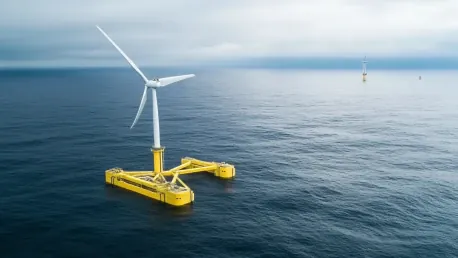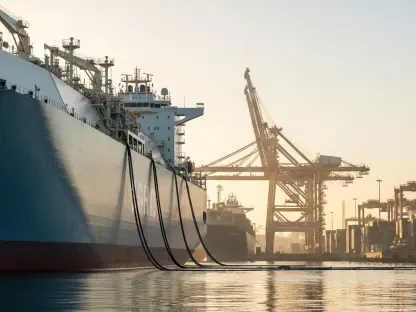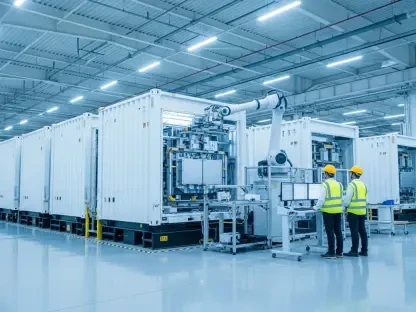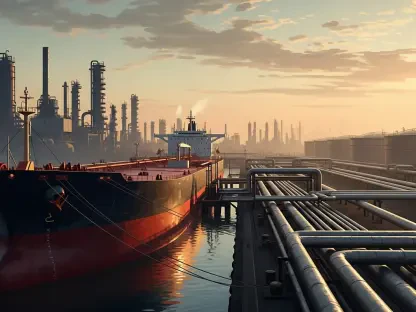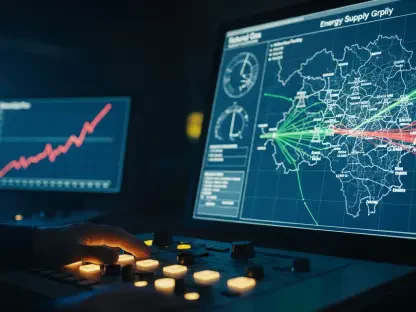Norway’s burgeoning floating offshore wind energy sector is capturing global attention. With a rich history in maritime and energy industries, Norway is uniquely positioned to spearhead advancements in this innovative and sustainable field. This article explores the promise and potential of floating wind technology, driven by Norwegian expertise and collaboration.
Technological Innovations Driving Floating Offshore Wind
Revolutionizing Foundation Designs
Leading Norwegian company Aker Solutions is pioneering the development of new floating foundation designs. The company plans to unveil three versatile and cost-effective designs in steel and concrete, tailored for serial fabrication and low-maintenance operations. These designs, aimed at efficiency and durability, promise to leverage decades of experience in the harsh North Sea offshore environment. This background equips Aker Solutions with unique insights into the challenges and requirements necessary to push the technology forward.
Aker Solutions’ historical expertise in floating structures ensures that these new designs are not only innovative but also practical and implementable in diverse marine conditions. With a focus on reducing costs through serial fabrication, the company aims to make floating offshore wind a more viable and attractive option for energy providers globally. The attention to low maintenance further enhances the attractiveness of these solutions, particularly for remote or difficult-to-access sites where maintenance can be both challenging and expensive.
Digital Solutions and Advanced Monitoring Techniques
The integration of digital solutions into offshore wind infrastructure is another milestone for the industry. Companies like KONGSBERG and Tampnet are at the forefront of creating sophisticated digital monitoring systems that promise to revolutionize the way infrastructure is managed. These digital solutions are designed to provide real-time surveillance of critical assets, ensuring that any issues are identified and addressed promptly, significantly enhancing operational reliability.
Advanced monitoring techniques mean that asset integrity can be continuously assessed, providing valuable data that can be used to optimize maintenance schedules and procedures. This real-time feedback loop is essential for ensuring long-term operational efficiency and safety. Additionally, these innovations help in predictive maintenance, minimizing downtime and extending the lifespan of critical components, which is vital for the economic viability of offshore wind projects.
Collaboration Across the Offshore Wind Supply Chain
Synchronized Efforts for Installation and Support Systems
Norwegian companies are working together to overcome industry challenges by forming cross-functional teams. Companies such as Nekkar, Scanmudring, and Windspider are revolutionizing installation methods to ensure efficiency and safety. Their collaborative efforts are paving the way for more streamlined and effective installation processes, reducing time and costs associated with deploying offshore wind farms.
Moreover, 4Subsea and Vissim provide offshore decision support tools that aid in informed operations management. These tools play a crucial role in optimizing the performance and reliability of offshore installations, ensuring that the best possible decisions are made based on real-time data. The synergy between different players in the supply chain is vital for driving innovation and overcoming the complex challenges associated with offshore wind energy.
Government Involvement and Policy Support
Industry experts stress the importance of public funding and government support in the advancement of floating wind technology. Given the high financial stakes and complexities intrinsic to floating wind projects, government intervention can significantly lower barriers. Substantial public investments are essential to mitigate risks and attract private sector participation, fostering an environment conducive to sustainable growth.
Simplifying and harmonizing regulatory frameworks across Europe is also crucial for accelerating progress. Streamlined regulations can reduce the bureaucratic hurdles that often delay projects, enabling a faster transition from planning to deployment. Klaus Udesen of Norwegian Energy Partners (NORWEP) underscores the significance of governmental efforts in deconstructing regulatory barriers. The harmonization of rules across nations can facilitate cross-border collaborations and market expansion, ensuring that the floating offshore wind sector thrives.
Global Market Opportunities
Expanding Horizons Beyond Europe
The groundbreaking designs and solutions being developed by Norwegian companies hold vast potential for global markets. Aker Solutions is poised to adapt its technologies to meet the diverse needs of regions such as South Korea and the US. This adaptability underscores Norway’s strategic vision for international leadership in floating offshore wind energy. By tailoring their solutions to different environmental and regulatory conditions, Norwegian companies can offer competitive advantages in various international markets.
This global market expansion is not only beneficial for the companies involved but also for the broader renewable energy sector. It enables the sharing of best practices and technological innovations across borders, fostering a more connected and resilient global energy infrastructure. The ability to operate in diverse environments also demonstrates the robustness and versatility of Norwegian technological advancements, reinforcing their position as industry leaders.
Showcasing Innovation at Global Events
Norway is making significant strides in the floating offshore wind energy sector, drawing international interest. With its deep roots in both maritime and energy industries, Norway stands out as a prime leader in advancing this cutting-edge and eco-friendly technology. The country’s extensive experience in these fields gives it a competitive edge, allowing it to effectively innovate and deploy sustainable energy solutions. This article delves into the potential and promise of floating wind technology, highlighting how Norwegian expertise, along with strong collaborative efforts, is driving this transformative industry forward. As these developments unfold, Norway’s role in shaping the future of renewable energy continues to grow, proving its commitment to sustainable advancement and global energy solutions.
